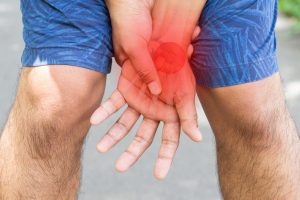 Following on from his last blog “Groin Pain in Athletes”, here Kieran gives advice on how to reduce the risk of groin pain when playing football.
Following on from his last blog “Groin Pain in Athletes”, here Kieran gives advice on how to reduce the risk of groin pain when playing football.
How can I prevent groin pain?
Because of the complexity of the different structures involved in groin pain, this can be a difficult area to treat. However there are a few simple tips you can follow to reduce your risk of developing groin:
1) Gradually build up your game time
If you haven’t played football since last May, it is unreasonable to expect your body to be able to cope with 90 minutes. Build your playing time up from 30, to 45 and finally 60 minutes before attempting to play for 90 minutes.
 2) Get stronger
2) Get stronger
Exercise such as the squat and deadlift (if done correctly!) are an excellent way of developing the strength required to take the strain off the pelvic area, especially important as the football season enters the winter months – and pitches get muddy.
Much of football takes place on one leg, whether it be putting through an Iniesta-style slide rule pass, or turning sharply to evade a centre-back’s attentions. Therefore training strength and balance on one leg has great benefits. To avoid injury, a footballer should be able to perform 2-3 sets of 15 single leg squats with good balance and alignment (the hips should stay level, the knee should pass over the foot). If this exercise proves difficult perhaps start with taking support though the opposite upper limb.
A word of WARNING – squatting has the potential to aggravate groin pain. If you are getting pain in your groin whilst/after squatting then perhaps you need some coaching regarding your squatting technique. It also should be remembered that there is a proportion of the population born with variations in the shape of their hip bones which makes deep squatting an unsuitable exercise for them.
 3) Get flexible
3) Get flexible
10 minutes daily stretching will help maintain your flexibility. Included in your list of stretches should be the calf, hamstring, quadriceps and hip flexor muscles. It may also be helpful to stretch your adductor (inner thigh, see picture) muscles, although care must be taken with these, especially if your groin is already painful.
Hold stretches for 30 seconds and repeat each 3 times.
4) Warm up properly
Standing, shivering in the cold, taking pot shots at your goalkeeper does not constitute a proper warm! A good warm up, which gradually builds up in intensity will ensure that your muscles (& brain) are ‘switched on’ & ready for a game – in addition to increasing joint and muscle flexibility.
A warm up should take 15 to 20 minutes and include:
- Jogging for at least 5 minutes to raise your heart rate and increase blood flow
- Gently stretching the aforementioned muscle groups
- Ball work drills such as ‘piggy in the middle’
- Change of direction drills, eg: cutting to left & right, running backwards, side shuffling
- Building running speed up from 50%, to 75% and then 90% before running at 100% in a series of short sprints

 2) Get stronger
2) Get stronger 3) Get flexible
3) Get flexible



Comments